
8 minute read
HOOFED: The ungulates of Rocky
Story by Z.F. Coen, photographs by Marsha Hobert, Deena Marie Czech, and Brad Manard

A bull elk greets a cow with her young in Rocky Mountain National Park.
Photo by Marsha Hobert
Advertisement
There is a stillness to the air as the fog slowly creeps back west into the Divide. Pillows of lofty snow cover the boughs of fir and pine trees, occasionally dropping loose snowflakes that dust the surrounding air.

A bull elk in rut, bugling.
Photo by Marsha Hobert
A gentle brush of the lightest breeze reminds you of the chill in the air. A curl of vapor rises from a nearby willow thicket as a dark-eyed junco flutters away. Cautiously, a cow elk parts through the thick willow brush with her calf and a herd of cows following. They will spend the morning browsing grasses, willow, and aspen.
Rocky Mountain National Park offers some of the best habitat in Colorado for ungulates, which are mammals “having hooves.” Moose, elk, mule deer, and bighorn sheep are a favorite sight among visitors and residents. Of these, elk will be the most noted and most likely seen by the average person. The abundance of Rocky Mountain elk in the park is astounding.
To the average person enjoying the scenery of the Park, the most elusive of the ungulates are the North American moose. Most passersby are abruptly delighted upon sighting one of these most beloved creatures. There is a tenderness that can only be characterized by their maternalistic instincts, and a ferocity in their guardianship of young. These seemingly-gentle giants are quick on their feet when they need to defend themselves and are undeterred by fear.

A young female moose.
Photo by Marsha Hobert
Moose habitat offered by RMNP near Estes Park is lush with willows and young quaking aspen. Near Lily Lake, a cow and her calf were often seen in the young aspen groves on the south side of the lake in 2020.
Jim Robbins, in his New York Times article, notes that “North American moose, (Alces alces), are the largest browsing ruminant of the deer family Cervidae, and preferably inhabit young hardwood forests, deciduous mixed forests, and salt-rich wetland habitats that have an abundance of woody browse and salty aquatic vegetation.”

Two bull moose graze near Brainard Lake, south of Rocky.
Photo by Marsha Hobert
These creatures can be found in the riparian areas of RMNP but their habitat range is vast, so this becomes a sighting of chance for most.
According to Jason Dungan, “Low elevation riparian meadows are characterized by large stands of geyer willow (Salix geyeriana), mountain willow (Salix moncola), drummond willow (Salix drummondiana), plane-leaf willow (Salix planifolia), and smaller stands of whiplash willow (Salix lasiandra), and wolf willow (Salix wolfii).” The Colorado River drainage offers one of the most abundant riparian areas in the Park, and it is estimated there are only around 60-80 moose foraging this area.
On the east side of the Continental Divide, Moraine Park, Sprague Lake, and Beaver Meadows are a frequented area by the estimated 10-20 moose that were introduced to the Park pre-2000.
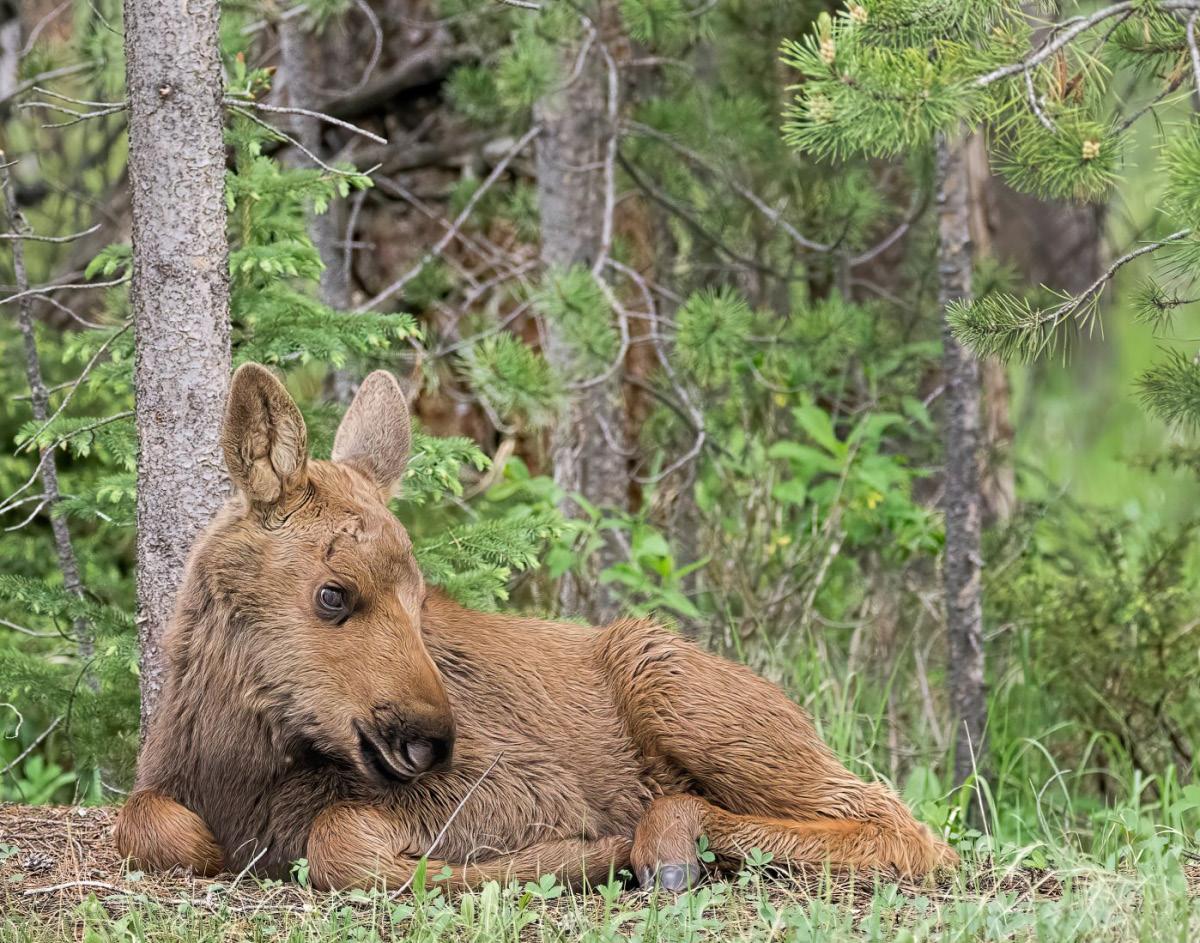
A newborn moose calf.
Photo by Deena Marie Czech
On average, an adult moose stands between five and seven feet high at the shoulder. Large males can weigh as much as 1,500 pounds while females are roughly three-quarters of this size. Being the largest of the ungulates, the only predator a moose is concerned with are wolves.
Since the early 90's there has been a considerable decline of moose in temperate regions of the northern Rocky Mountains. The primary causes of decline are wolf predation and disease. Unfortunately, little is taking place to ensure the continued conservation of habitat and herd management.

A bull moose munches some fresh willow in RMNP.
Photo by Marsha Hobert
Most common to see grazing the meadows of native grasses that create the lush, golden, and green landscape of RMNP and areas surrounding Estes Park are elk. Photographers from all areas of the world frequently capture images of these marvelous and curious creatures.
They are known to be very tame around people, however they can be extremely dangerous. During the rut, which is an annually recurring state of certain male animals (such as deer or elk) during which behavior associated with the urge to breed is displayed, bull elk are known to be much more aggressive and have been the cause of multiple human injuries.
Cow elk are as aggressive and possibly more when they are nursing a calf through its maturity.
Conservation biologist Ryan Garret argues an overabundance of elk frequently exerts a lot of pressure on vegetation and are often found to cause a limitation in other species of wildlife. Recent evidence suggests that ungulates preferentially browse individual plants that are high in nitrogen. Similar in diet to moose, elk will be seen foraging in riparian areas of the park. When they have had a fill for the day, elk will bed in a herd without concern for location it seems.
This is a habit that can be linked to oversized herds. Overpopulation of elk is still a concern to conserve habitat for an abundance of wildlife and to ensure a healthy herd.

A bull elk in "velvet"
Photo by Deena Marie Czech
Most elk will migrate to higher elevations in the summer months and as far up as the Ute trail peak, above the Alpine Visitor Center in RMNP. They will spend the summer foraging on tundra vegetation and new growth from the late spring. The tundra is a delicate biome and should be used on trail only. Walking off trail can permanently damage fragile tundra vegetation that can be as much or more than 100 years old.
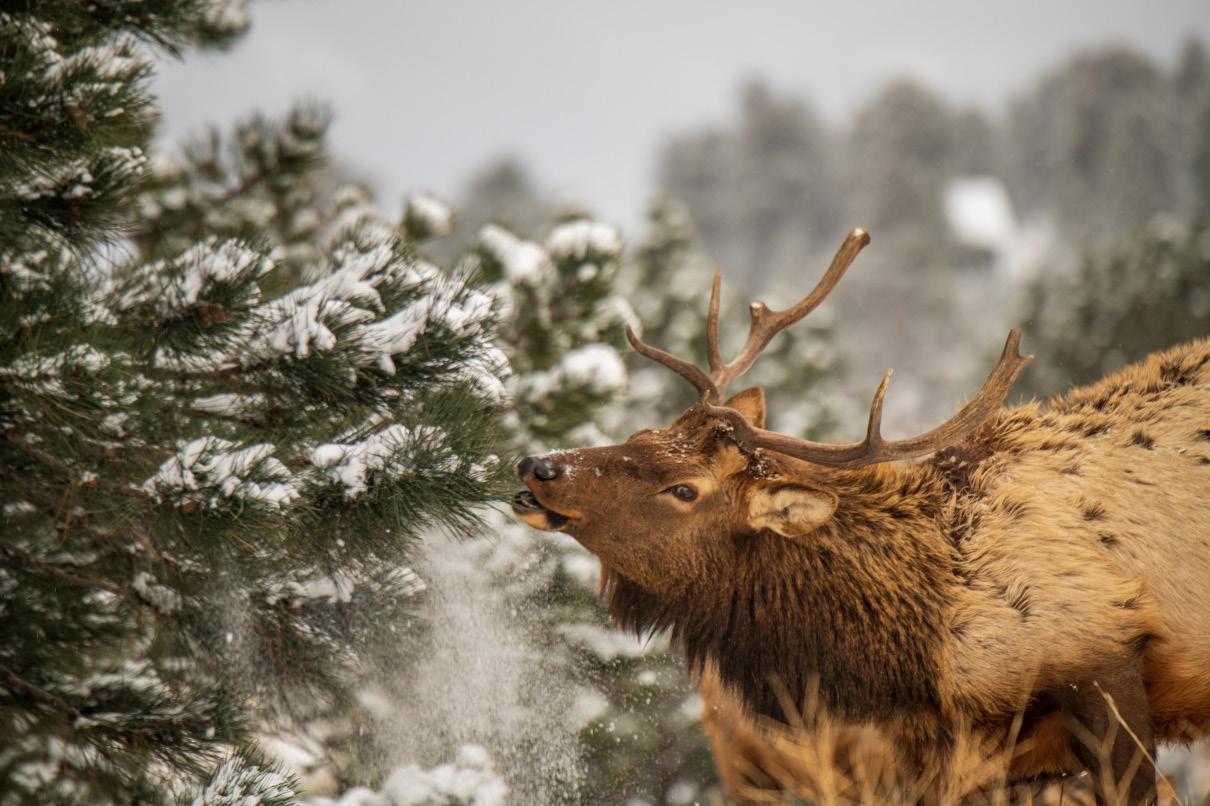
A bull elk just prior to shedding its antlers
Photo by Marsha Hobert
As the snow starts to cover the 14rs as seen from the front range of the Continental Divide, the elk population start to migrate to lower elevations to avoid heavy snow buildup in the winter months. Through the winter you can expect to see a local herd of elk frequenting downtown Estes Park.
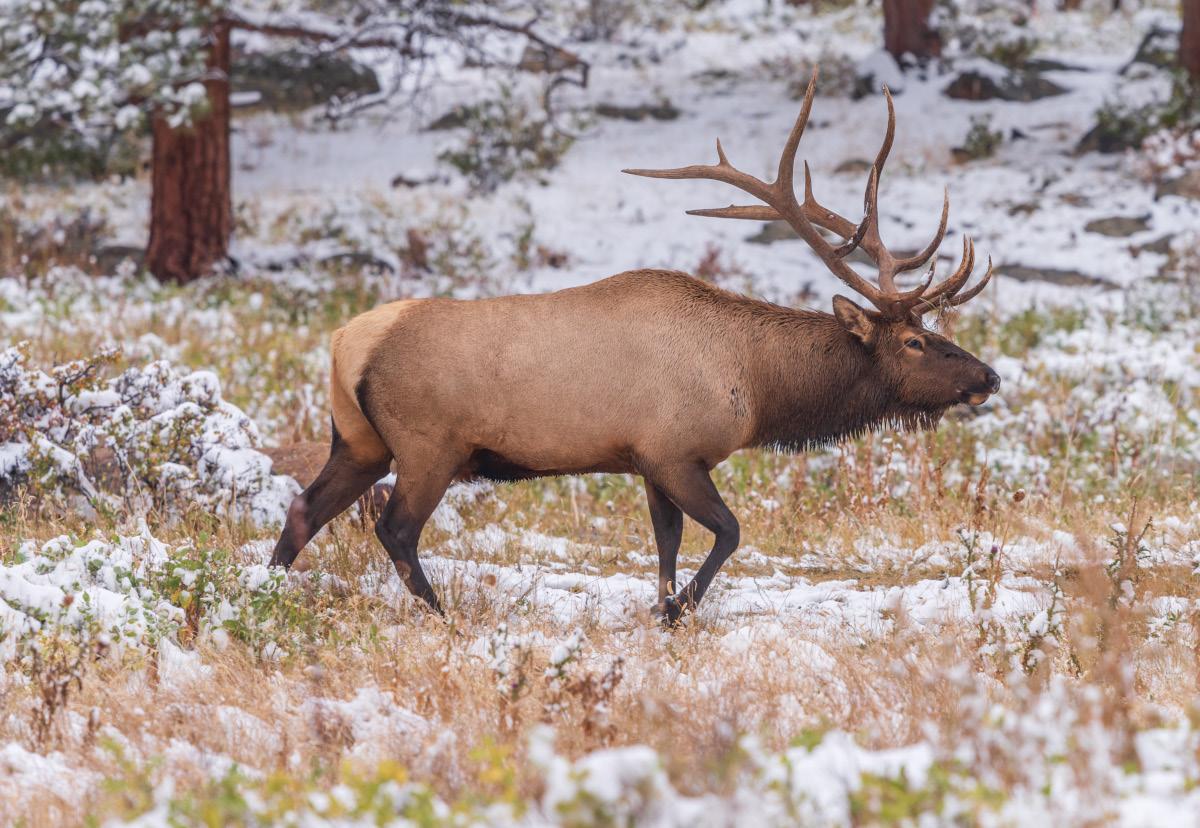
A bull elk in peak condition, during rut.
Photo by Marsha Hobert
This begins with the onset of the rut, so it is wise to keep a very safe distance.
Another wildly popular ungulate is Rocky Mountain bighorn sheep which can be seen precariously browsing steep inclines in the canyons heading west into Estes Park from the valley of the Front Range.
With gracious elegance, these ungulates dance across nearly vertical rock faces, seeking a small patch of fescue or maybe a mountain mahogany bush standing perilously in a small crack in the granite stoneface. They seem to be concerned with escape to safety often and as such, will take advantage of these cliff faces.
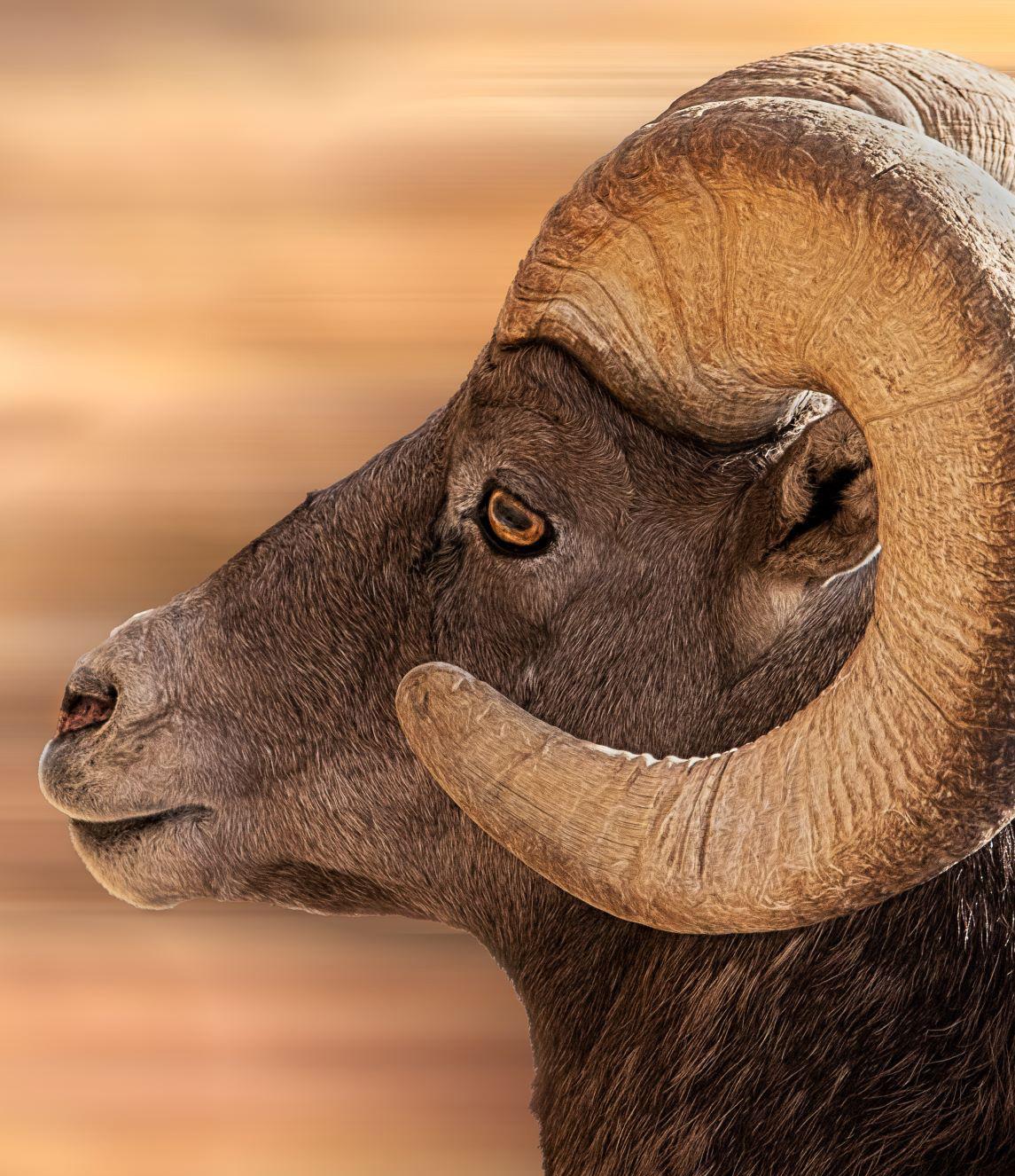
Bighorn sheep
Photo by Deena Marie Czech
Bighorn sheep browse on wheatgrass, fescue, and sagebrush, and can be found in tall standing ponderosa pine and Douglas fir forests. A treat for them may be a patch of cheatgrass or knapweed.

Bighorn sheep
Photo by Marsha Hobert
Bighorn sheep, like other mountain-dwelling ungulates, display an intricate migratory pattern that follows with the changing seasons and food availability while maintaining their home range. Zoologist Kim G. Poole found that “sheep typically winter at lower elevations to avoid deep snows that accumulate in most of their range.”
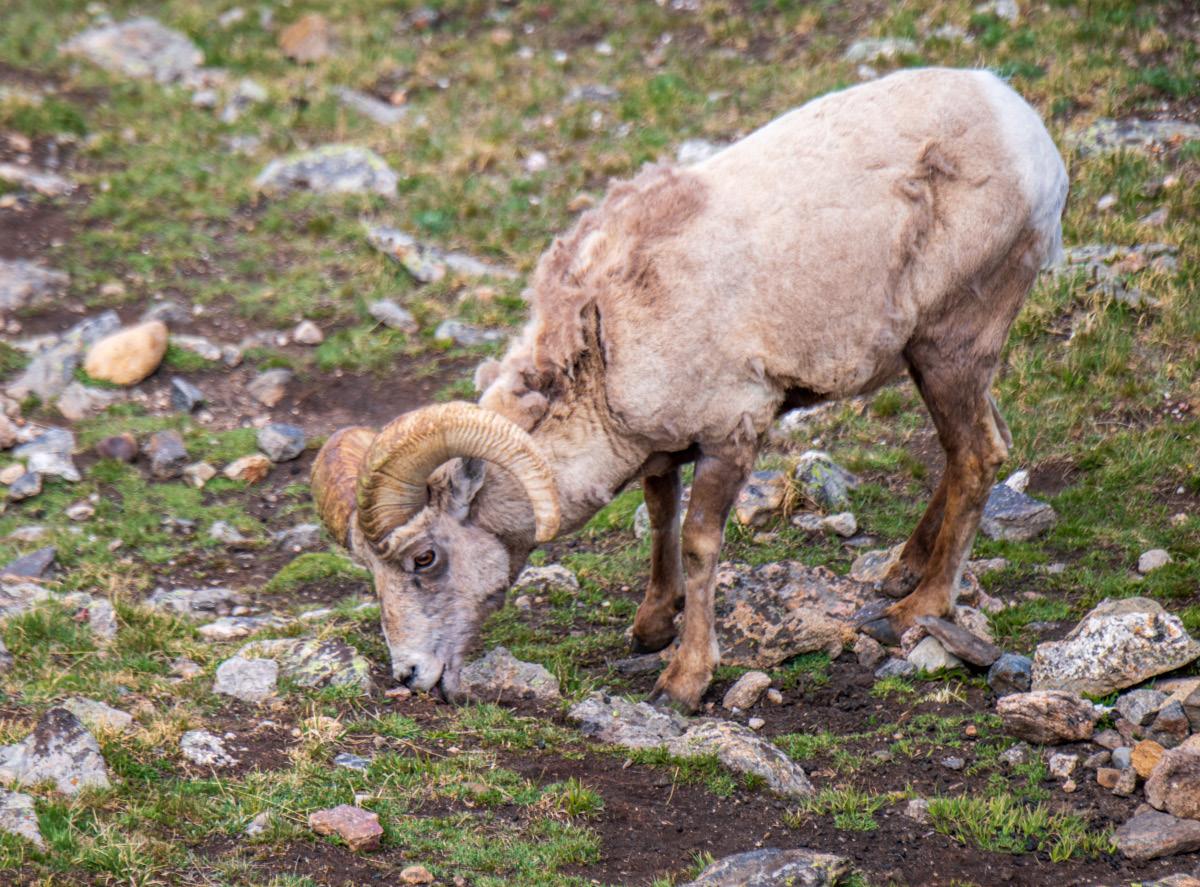
A bighorn sheep in spring molt.
Photo by Marsha Hobert
Snow buildup in the winter months will push sheep to lower elevations for food or will display increased use of steep terrain (which tends to shed snow), or selection of high-elevation windswept ridges. During the summer months Bighorn Sheep will be seen at higher elevations. Throughout the summer, a select flock of sheep can often be seen between Drake, Co. and Loveland, Co., but be cautious and please use the pull-offs to carefully watch these splendid creatures.

A herd of big horn sheep at Sheep Lakes in RMNP.
Photo by Marsha Hobert

Young bighorn sheep at Sheep Lakes.
Photo by Marsha Hobert
Another common foraging ungulate is the mule deer (Odocoileus hemionus). These gentle and often, social ungulates are often seen throughout Rocky and surrounding areas.

Mule deer are named for their large ears.
Photo by Brad Manard
In a National Park Service article, mule deer are “named for their oversized ears that resemble a mule's ears.” Mule deer, like other ungulates, are sociable and are often found in groups. Mule deer primarily forage fescue and stands of willow throughout the year.
Accordingly, they will be found wintering in lower elevations where the snowpack is less, and some places absent of snow altogether. In the late summer and fall they will form larger family groups for protection and for breeding.

Mule Deer
Photo by Brad Manard
Bucks in the rut will utilize posturing and vehement jousting with their racks to gain dominance over competitors and the right to breed. After the rut, many bucks will fail to survive the winter from exhaustion and possibly injury. During the rut, bucks will be much more aggressive to onlookers.

An exhausted mule deer takes a break.
Photo by Brad Manard.
In 1895, according to NPS.gov, mule deer were nearly decimated by disease, hunting, predation, and harsh elements. Predation from mountain lions is a primary cause for herd loss.
Hunting is regulated to help maintain a healthy and adequately-sized population of deer surrounding Rocky. Currently it is alleged there are more than a couple hundred deer browsing the Estes Valley area.
All of Rocky's beloved ungulates are frequent and welcome visitors for the onlooker in RMNP. If one takes a moment spent in observation of these animals, a fondness and appreciation for them is easily cultivated.

Z. F. Coen is a freelance writer primarily interested in wildlife and outdoors. His passion for outdoors has kept him involved in numerous nonprofits focused on wildlife rehabilitation in northern Colorado. He is also a licensed falconer who is currently working with red-tailed hawks. Coen, his wife, and six children reside in Estes Park Co., where he is currently pursuing his doctorate in experimental psychology. He is an artist working in 3D, a musician of 29 years, and author. He also works locally as a backpacking, hiking, and fishing guide. He additionally offers hawk walks for PTSD and CPTSD suffering veterans as a free service.

Marsha Hobert has been taking photographs since a very young age and her passion is to photograph landscapes and animals (domestic and wildlife). With her 5 Siamese cats, she is always entertained. Marsha Hobert and her husband Ken, moved to their family home in Glen Haven in 1981. At that me, they started Hobert Office Services in Estes Park, providing office/business services. They owned and operated the business for 38 years and sold it in 2019 to retire. Many of her photographs are seen on Denver TV stations. See more of her work at www.PhotosbyMarsha.com
http://photosbymarsha.com/
Deena Marie Czech, is a passionate and ethical wildlife photographer “Keep wildlife wild” is her mantra. A long time resident of Allenspark, Colorado, she considers RMNP to be out her back door. “ I love photography but I equally love how it gives me an excuse to really study an animal and its behavior”. Deena has spent 30 years active in dog rescue. She is a peanut butter whiskey connoisseur and a Instant Pot cooking genius. Her images can be found on Instagram at or purchased at Distant Harbors, located in Allenspark, Colorado. https://www.instagram.com/wild_basin/

Brad Manard has been coming to Estes Park and RMNP since he was a kid fifty years ago. Through this time his interest in nature and wildlife photography has grown. So much so, that when he retired last spring after 27 years as a school superintendent, he moved permanently to Estes. He now spends his time photographing the mountains and wildlife, and is also an author with four published books including two novels. The White Room is a romance/adventure novel that takes place in the Estes Park area. Information on Brad's photos and books can be found on his website at bradmanard.smugmug.com.
https://bradmanard.smugmug.com/




